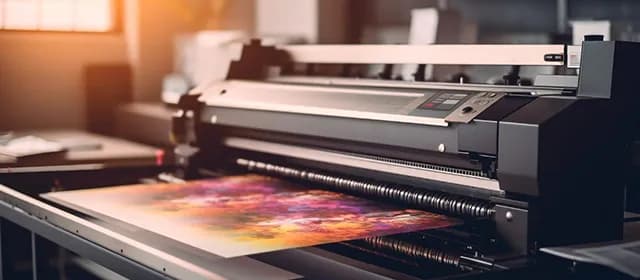Printed circuit boards (PCBs) are everywhere, whether it's your digital watch, smartphone, or even large and complex industrial devices. They have become the key components of modern electronic equipment, allowing a streamlined flow of electronic signals and power. As technology advances, there has been a significant increase in the demand for PCBs across industries.
According to a report by Kings Research, the global printed circuit board market size is projected to reach USD 118.63 billion by 2031, expanding at a CAGR (compound annual growth rate) of 4.94% from 2024 to 2031.
There are various manufacturers and vendors in the PCB market that cater to the different needs of their clients. If you're looking to buy PCB components, you might feel confident that you know what to look for. But when you step into the market, things can quickly become overwhelming.
With so many options out there, finding the right PCB that fits your device's purpose can be confusing. That’s why it’s important to make sure the PCB you choose has the essential components and is well-suited for its intended use. So, what should you
consider when purchasing the perfect PC board? Let’s explore.
What is a Printed Circuit Board?
A non-conductive material that has conductive lines etched or printed is referred to as a printed circuit board, PC board, or PCB. Electronic components are placed onto the board, and the traces act as pathways that connect these components, allowing them to work together as a functional circuit or assembly.
PCB can include a multi-layer conductor or can have conductors on both sides or even on one side. Insulating layers separate each layer on the multi-layer conductors.
Resin composites, glass fiber, or plastic are a few common materials used in PCBs with copper traces. There are a vast number of other materials that can be used. The majority of the PCBs are rigid and flat. However, there are flexible substrates available that can fit in compact spaces. Surface mount or through-hole strategies are used to mount the components in PCB.
What are the Types of Printed Circuit Boards?
Even though all PCBs have the same basic purpose, they come in a wide range of designs and configurations to meet the demands of different applications. Mentioned below are some of the most common PCB types:
- Flexible
PCBs that have an efficient folding and bending capability to meet the requirements of unusual shapes and compact spaces are referred to as flexible PC boards. Their capability to bend and fold makes them versatile options which enables them to be packed into compact electronic devices. As these PCBs are adaptable, the product does not have to be built to fit around the restrictions. Flexible printed boards are more heat resistant compared to their counterparts.
- Rigid
Rigid fiberglass is used to develop rigid printed board circuits. Hence, these PCBs are more practical and cost-efficient. However, the rigid fiberglass makes them inflexible. It is cost-effective and easy to produce compared to flexible PCBs. They are less versatile and it can be challenging to integrate them into places that are compact or have uncommon geometrics.
- Rigid-flex
Rigid-flex PCBs have the best qualities of both rigid and flexible PCBs. Compared to the other models, rigid-flex PCBs have their electronic interconnectivity concealed under the board. It helps minimize the overall size and weight of the PCB. It becomes an ideal choice when ultra-light packaging is essential. These PCBs are more dependable and sturdy while maintaining flexibility and effective strength.
What are the Use Cases of the PC Boards?
There are various industries that integrate PCBs in their devices. Following are a few of the most common applications of PC boards across multiple industries:
- Aerospace
Power supplies, communication, and monitoring systems in the aerospace sector utilize PCBs.
- LEDs
Light-emitting diodes that are found in medical and residential lighting, computer, and automotive displays all leverage PCBs.
- Security Devices
Smoke detectors, electronic door locks, and security cameras are a few security and safety applications that use PCBs.
- Automotive Components
PCBs are found in car parts like sensors, navigation, and control systems.
- Industrial Equipment
Multiple power calculation and manufacturing tools have PCBs integrated into them.
- Consumer Electronics
20% Consumer Electronics rely on PCBs. Smartphones, home appliances, computers, and various other consumer electronic products need PCBs to work.
- Medical Devices
Infusion pumps, CAT scanners, monitors, and internal devices are a few medical machines that utilize PCBs in them.
These are the widespread applications of printed circuit boards across various industries. Let us now have a look at how are the prices decided for a PCB.
How is the Price of Printed Circuit Board Determined?
Studies indicate that labor and utility costs comprise 65–80% of the total PCB production expenses, varying based on factors such as the number of layers, size, and other specifications. Quality, price, dependability, and complexity are a few of the diverse parameters of PCBs. The cost of PCBs can range from low to high depending on the requirements. Given below are the few factors that influence the pricing of the PCBs:
- Size and Quantity of the Batch
The quantity of the PCB you purchase and the size of the batch will determine the cost. Bulk quantities are less costly in comparison to smaller quantities. However, the cost is also significantly influenced by the batch size, a factor that often goes unnoticed. Hence, it is essential to consult with the PCB manufacturers to determine what will be the best approach and will have a minimum cost.
- Assembly Type
The printed circuit board assembly type can be an influential factor that can cause the PCB price to fluctuate. For example, Surface-Mount Assembly (SMA) involves mounting components directly onto the surface of a circuit board. It is a faster and more cost-effective manufacturing method compared to through-hole soldering. However, through-hole soldering offers a more robust connection for components, which is why many still favor it, even though it tends to be more expensive.
- Placement of the Component
The price of the PCB will be increased or decreased depending on the placement of the component. Hence, it is crucial to re-evaluate how you want to place the components to minimize the manufacturing cost.
- Manufacturing Process
Each component package should be attached to the PCB utilizing a specific process. If you choose a fragile, intricate, and hefty component package the cost will also increase. Each additional layer in a flexible PCB can increase costs by 25-50% compared to previous layers due to the complexities involved in multilayer construction.
- Package Size of the Component
Industrial component package size results in more cost-effective PCBs. Organizations should try and stick to these sizes to minimize the cost.
- The Number of Components required in the PCB
The number of components utilized in the PCBs will affect its pricing. Procuring these components along with the cost involved in the production increases its pricing. It is crucial to ensure the circuit boards are highly efficient to minimize the PCB price.
- Additional Requirements
Particular preparation requirements of the component or parts can result in a higher cost for the PCB. To minimize the costs, manufacturers can stick to basic processing and sizing needs. Bill of materials (BOM), coating, potting, materials, and layers can impact the PCB pricing. It is critical to select the options that minimize the PCB pricing. The cost of PCBs as a percentage of the total bill of materials (BOM) for a complete board varies significantly depending on the end product. However, it typically ranges from 10% to 25% for mid-to-high complexity designs.
These are the factors that can impact the pricing of the PC board. However, the good news is there are a few strategies to improve the cost of PCB during the design and development process.
Ways to Optimize PCB Costing During Design
Printed circuit board manufacturers can make a few changes in their design phase to minimize production costs. Here are some key guidelines to help reduce costs in PCBs without compromising quality:
- Specify tolerances only where they are functionally essential
- Standardize hole sizes to reduce tooling complexity
- Standardize board sizes and materials to enable volume aggregation
- Minimize layer counts whenever possible to simplify manufacturing
- Limit fine features like trace/space only where they are absolutely necessary
- Re-spin only for critical issues to minimize additional design iterations
- Opt for smaller board sizes that fit within standard panel arrays
- Use thoughtful design rules to avoid unnecessary complexity
While these strategies can effectively lower costs, it's essential not to compromise performance and reliability just for the sake of reducing expenses. As with any engineering decision, finding the right balance between technical requirements and cost efficiency is key.
What is the Printed Circuit Board Design Process?
If you plan to outsource the PCB manufacturing to a third-party vendor, the design processes will be more or less the same as given below:
- Initial Discussions with the Vendor
In this stage, organizations portray their idea to the vendor. The engineering team of the vendor will discuss with your team to determine how they would expect the product to operate. The timeframe for this stage of the process will rely on the intricacy of the component and the to-and-fro required in the design optimization process.
- The Creation of a Schematic
Once the supplier develops a schematic, you will have to review it. The schematics will eventually control the project. Hence, this phase plays a crucial role in understanding whether the vendor is accurate and thorough with their processes.
- The Design of PCB
The designer will develop the PCB by opening the schematic with Altium or another PCB layout program.
- The Creation of the Circuit Board
Once you approve the design, your engineer will produce a Gerber file, which serves as the blueprint for manufacturing the bare circuit board.
- The Board is Assembled
During this stage, the PCB goes through the assembly process, where each tiny component is precisely placed onto the board.
- Quality Inspections
The level of inspection required will vary depending on your product's industry and application, ensuring that standards are met before the board is finalized.
The design process might change based on the design requirement or the vendor’s processes.
Top 8 Factors to Consider While Buying PCB
There are various factors that you should consider before purchasing the right PC board that meets your requirements. Here are some of the factors that you should consider:
- Understanding the Product Needs
Before embarking on the journey to procure PCB boards, it is crucial to determine the project needs. Decision makers should consider factors like required electrical properties, layer count, material type, size, and complexity. Understand whether you require a multi-layer, single-layer, or double-layer PCB for the project. Each PCB option will have its unique restrictions and advantages.
- Selecting the Right Vendors
It is crucial to look for a dependable PCB supplier for procuring top-quality boards. Decision-makers should conduct in-depth research to determine well-known distributors or manufacturers that provide top-notch customer support, adopt stringent quality control techniques, and ensure timely delivery. Vendors that have certifications like RoHS compliance and ISO 9001 ensure they adhere to industry standards.
- Evaluate their Production Capabilities
Assess the supplier's manufacturing capabilities, taking into account their production capacity, turnaround time, and expertise in handling various PCB types, materials, and technologies. An ideal supplier should have advanced equipment and skills in surface mount technology (SMT) assembly, through-hole assembly, and advanced PCB fabrication techniques to meet a wide range of project needs.
- Vigilant Quality Checks and Testing
When choosing a supplier, it's essential to ensure they have rigorous quality control measures in place. Look for those who perform thorough inspections and testing. Additionally, the supplier should adhere to recognized international standards. Reliable suppliers often go the extra mile by providing you with detailed documentation and test reports, giving you peace of mind about the quality and reliability of your PC boards.
- Personalization and Prototyping
If your project demands custom PCB designs or prototypes, work with a supplier that provides these services. Customization allows you to adjust specifications like silkscreen labeling, hole sizes, dimensions, and copper thickness, to meet the PC board’s unique needs. Prototyping services are crucial to test and validate your designs before moving to mass production.
- Choosing the Right Material
The materials used in your PCB boards play a crucial role in determining their performance, durability, and cost. For instance, Flexible PCBs often use expensive substrates like polyimide, which can be 5 to 10 times costlier than the FR-4 materials used in rigid PCBs. This significant price difference is due to the higher material costs and the complexities involved in their manufacturing processes.
Depending on your project's requirements, choose suitable substrate materials like FR-4 for standard applications, flexible PCBs for bendable designs, high-frequency materials for metal-core PCBs, or RF circuits for better heat dissipation. It's essential to discuss material options available with the vendors to find the best match for your specific application.
- Pricing
While no one wants to overspend, the cheapest option isn’t always the best choice. It's tempting to go for the lowest quote, but be mindful that a rock-bottom price might mean corners are being cut. Reach out to different suppliers, ask for transparent cost breakdowns, and keep an eye out for any hidden fees or added expenses like shipping and customs. This way, you’re fully aware of what you’re paying for, and you avoid unpleasant surprises down the line.
- Support and Documentation
There’s nothing worse than feeling lost or unsupported when a technical issue arises. This is why it’s so important to choose a supplier that provides clear documentation and solid customer support. You’ll want to have easy access to assembly instructions, datasheets, and design guidelines. And if you ever hit a snag, knowing that someone is there to help you through it makes all the difference.
You should consider these factors to evaluate a PC board supplier to make the right decisions for your products.
Printed Circuit Board in a Nutshell
At the end of the day, sourcing PCBs isn’t just about grabbing the best deal. It’s about balancing quality, reliability, scalability, and ease of manufacturing to deliver true value. Armed with the insights from this printed circuit board buyer’s guide, designers and engineers can confidently make decisions that align with their technical needs and budget constraints, all while optimizing their project's overall performance.



